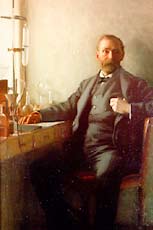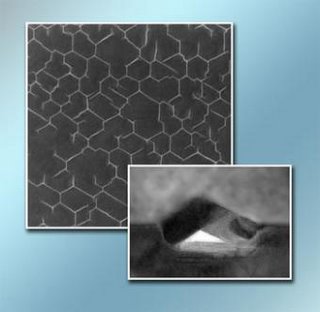Element 118 Created, Scientists Report

A U.S. and Russian team said Monday that it had created element 118, the heaviest known to date. It is the fifth ultra-heavy element produced by the team at Lawrence Livermore National Laboratory and the Joint Institute for Nuclear Research in Dubna, Russia, which has come to dominate the creation of short-lived elements. Although they produced only three atoms of element 118, and each lasted for less than a thousandth of a second, the team said that there is less than one chance in 10,000 of mistaken identity. A team at Lawrence Berkeley National Laboratory announced in 1999 that they had created element 118 by a different route, but those results were shown to have been fabricated by physicist Victor Ninov, who was eventually fired by Berkeley. 'We selected a completely different nuclear reaction, performed with completely different people in a different laboratory,' said physicist Ken Moody of Livermore, who led the American team, at a Monday news conference. 'Everything we do is checked and double-checked.' Their findings will be published today in the journal Physical Review C. The discovery has no immediate application, but brings researchers closer to discovering what theoretical physicists have described as an 'island of stability' - a group of ultra-heavy elements that may survive minutes, or even hours, compared to the fractions of a second now seen with the heaviest creations. That would allow researchers time to begin to understand the chemistry of the elements, perhaps even to discover some unique new chemical properties. 'I think of this like any other journey to a new place,' said physicist Nancy Stoyer, a member of the Livermore team. 'Finding it is something new, something interesting. At some point, we will no longer be able to discover new elements. We will reach the end of what we can find.' The team used a cyclotron at Dubna to bombard the man-made element californium-249 with ions of calcium-48. In two separate experiments, they bombarded the target with 40,000,000,000,000,000,000 ions, producing three atoms of element 118. Each atom had 118 protons and 179 neutrons in its nucleus, giving it an atomic weight of 297. The element was characterized by observing its radioactive disintegration. Each atom first spit out an alpha particle - composed of two protons and two neutrons - to become the previously known element 116. That element, in turn, spit out another alpha particle to become element 114, and then another to become element 112. Element 112 fissioned into two atoms of roughly equal size. Element 118 would fall directly below radon in the periodic table of the elements and is thus expected to be a so-called noble gas. Only 92 elements exist in nature, but physicists have produced 18 more that have been officially recognized and named. The Livermore-Dubna team has also created elements 113, 114, 115 and 116, but none of those has yet been officially recognized, named and placed in the periodic table because the work has not been replicated by other researchers. The team will now try to produce element 120 by bombarding a plutonium target with a beam of iron ions.
Heavier elements will require the construction of a new accelerator, the Rare Isotope Accelerator. But work on that accelerator, which will be built at either Michigan State University or the Argonne National Laboratory in Illinois, has been delayed by lack of funding.
Source:


























